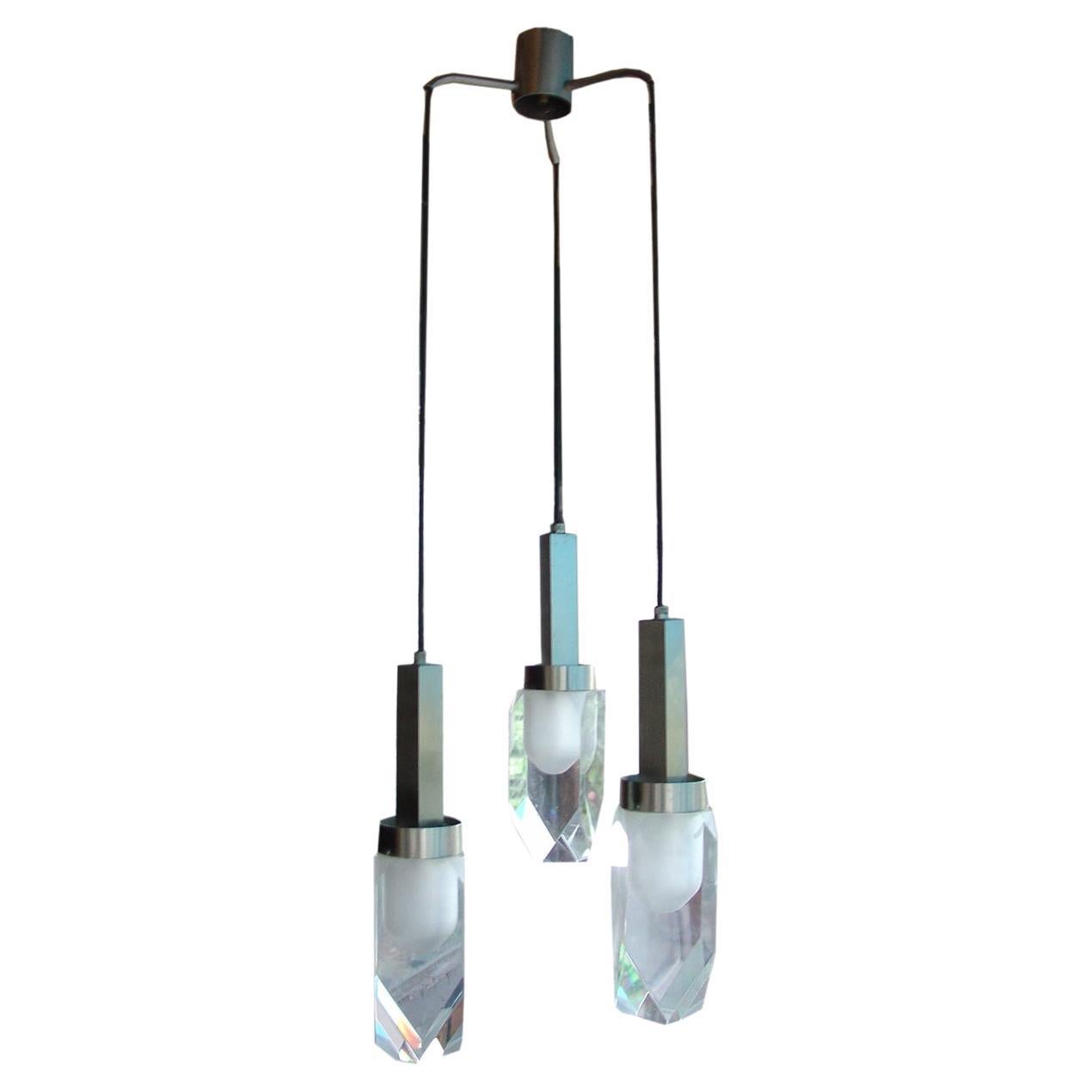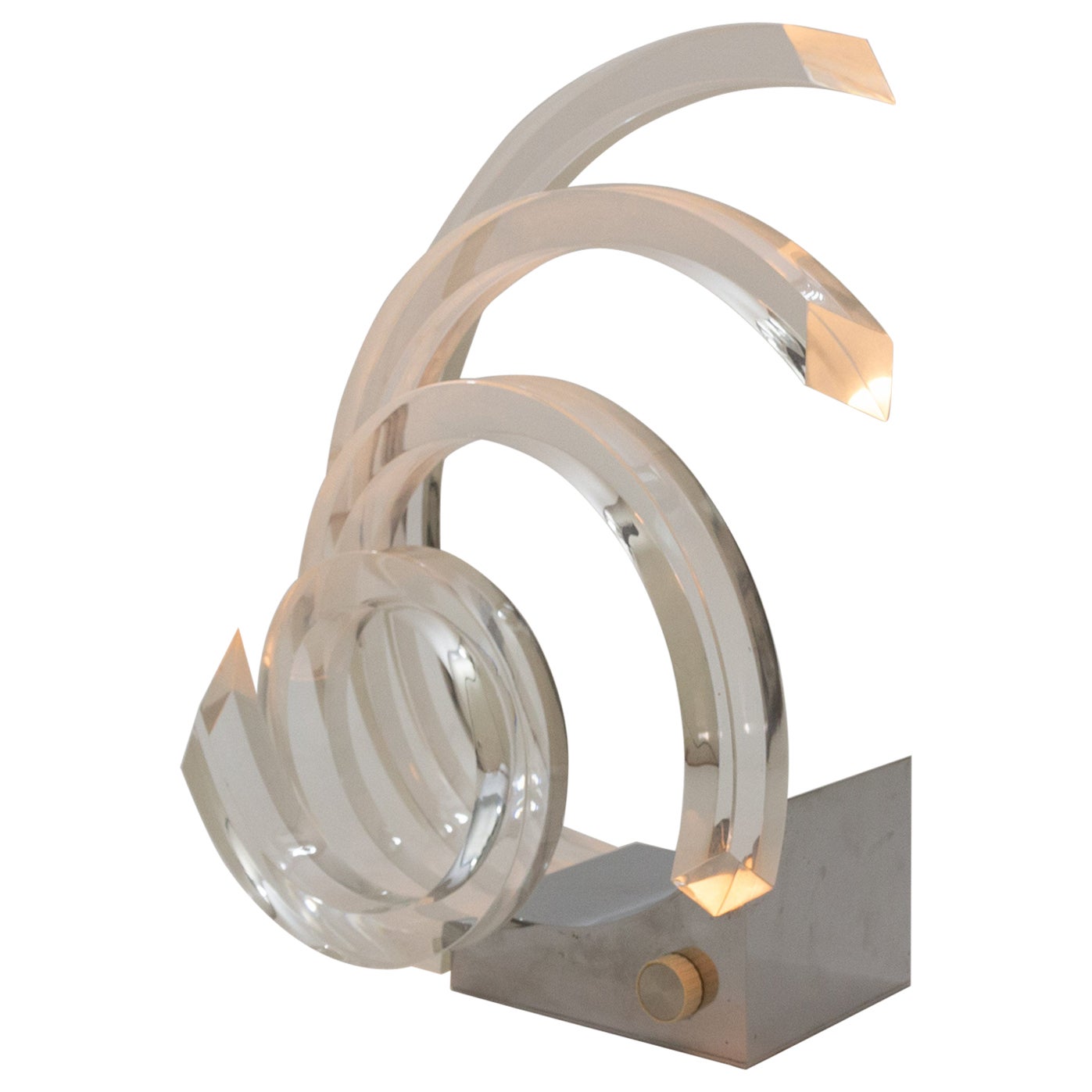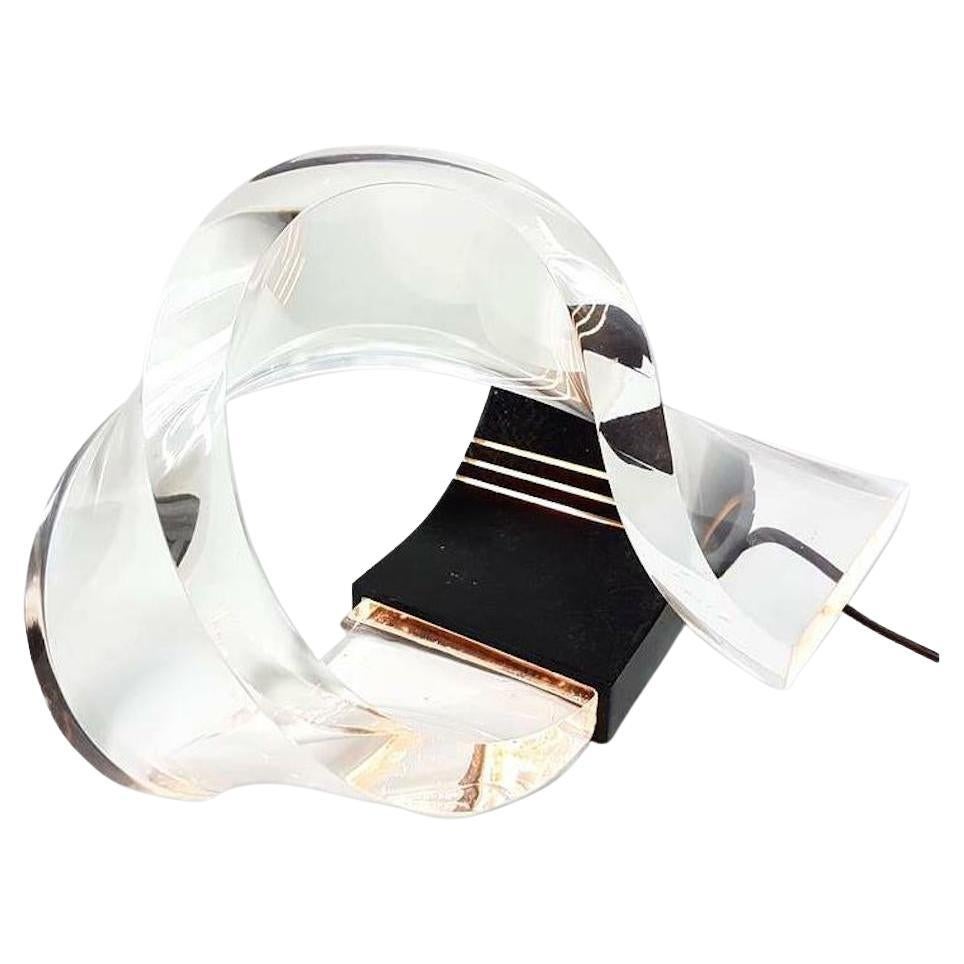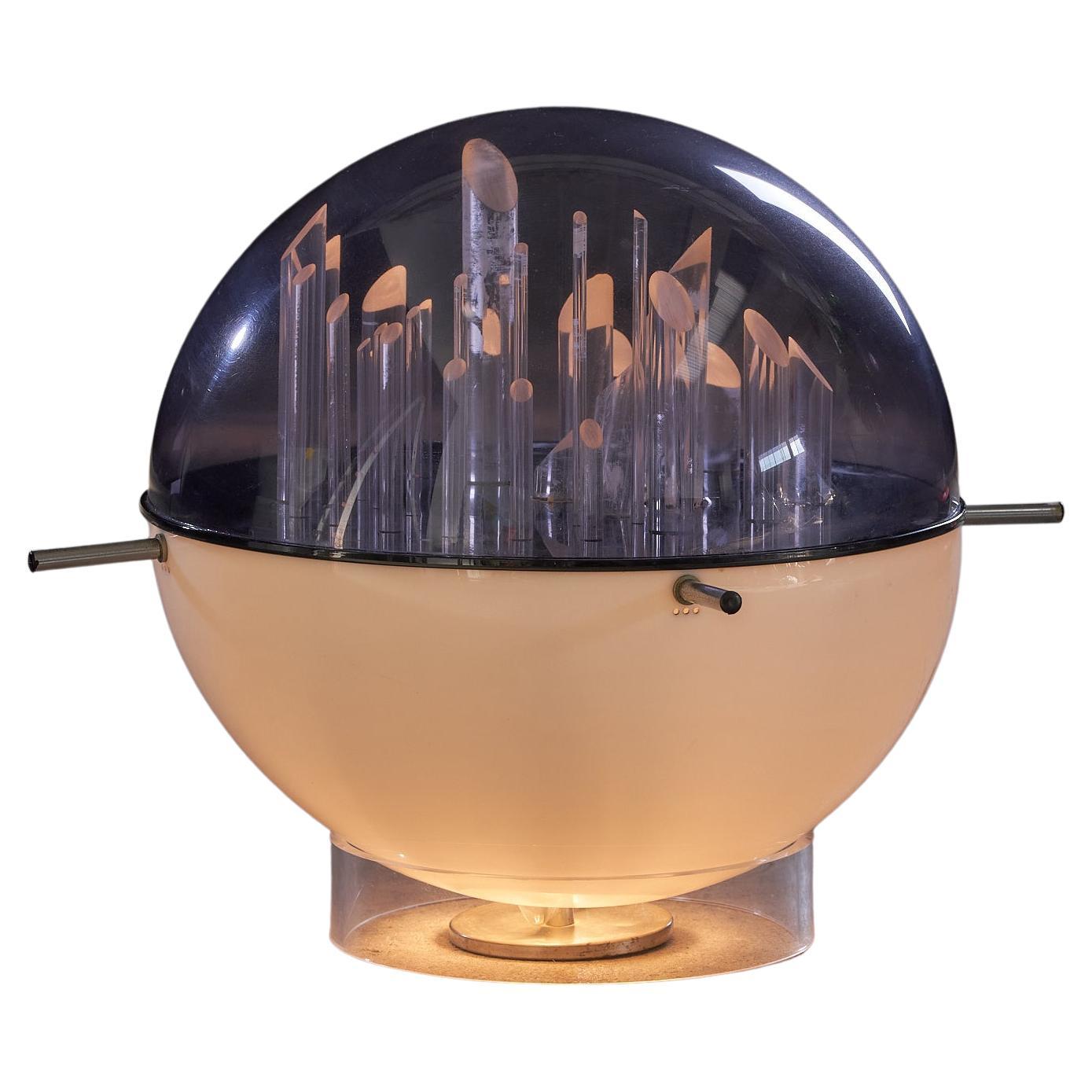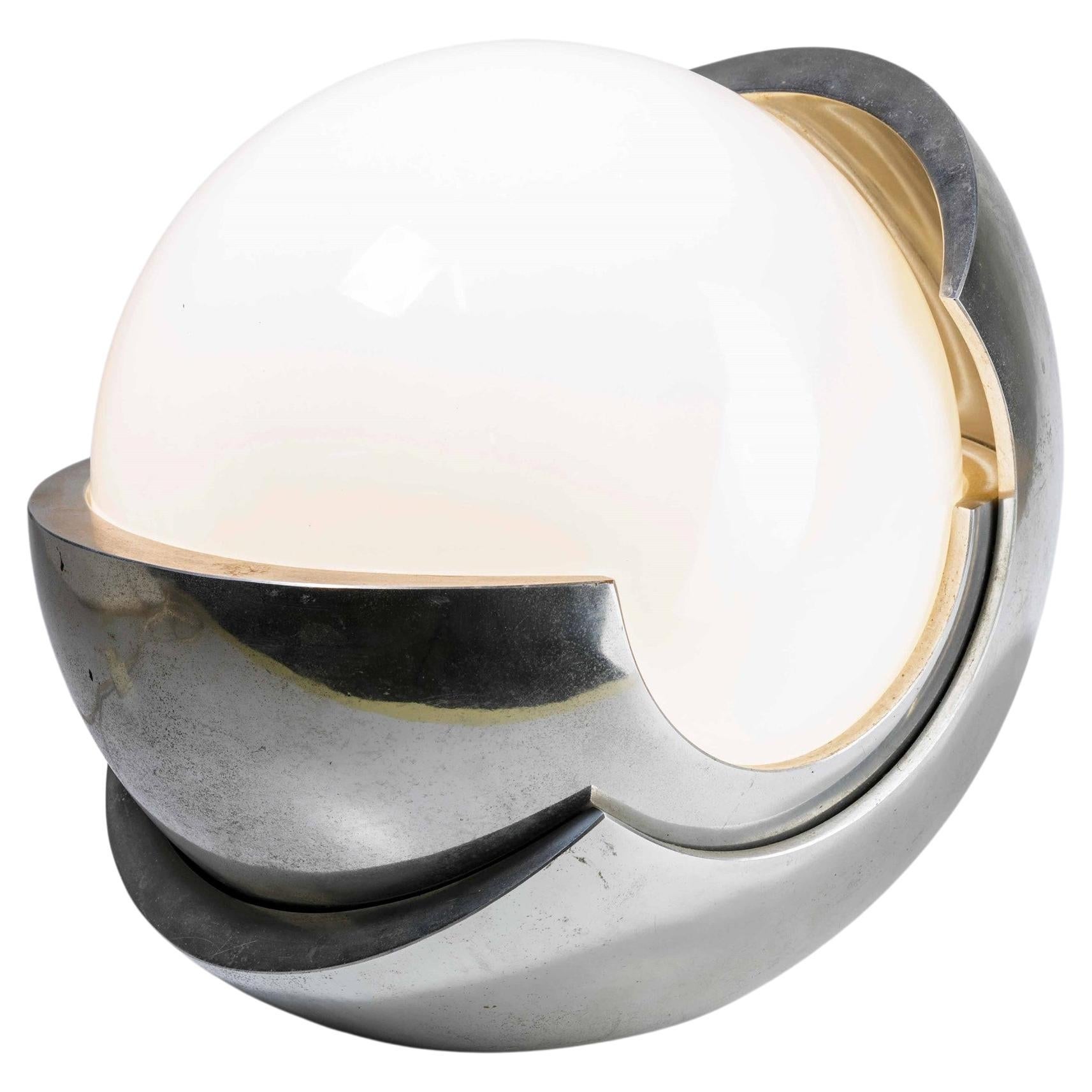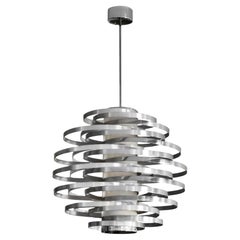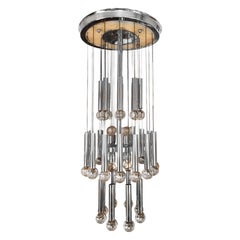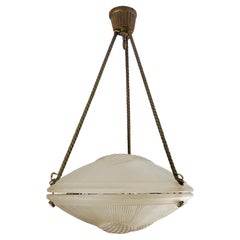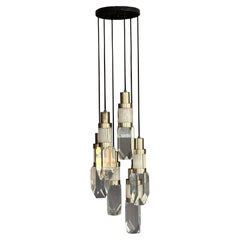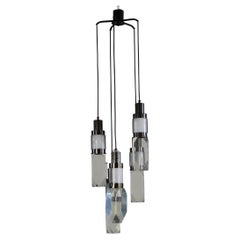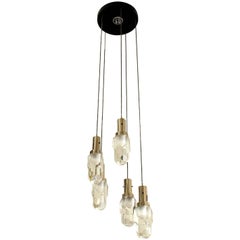
1970´s Chandelier by Gaetano Missaglia, thick Perspex - Italy
View Similar Items
Want more images or videos?
Request additional images or videos from the seller
1 of 6
1970´s Chandelier by Gaetano Missaglia, thick Perspex - Italy
About the Item
- Creator:Gaetano Missaglia (Designer)
- Dimensions:Height: 69.3 in (176 cm)Diameter: 15.75 in (40 cm)
- Style:Mid-Century Modern (Of the Period)
- Materials and Techniques:
- Place of Origin:
- Period:
- Date of Manufacture:1970s
- Condition:Wear consistent with age and use.
- Seller Location:Girona, ES
- Reference Number:1stDibs: LU103765205133
About the Seller
4.9
Vetted Seller
These experienced sellers undergo a comprehensive evaluation by our team of in-house experts.
Established in 1998
1stDibs seller since 2014
200 sales on 1stDibs
Typical response time: 3 hours
More From This SellerView All
- Gaetano Sciolari’s Cyclone Ceiling Light in Aluminiun - Italy 1970sBy Gaetano SciolariLocated in Girona, ESCeiling light in polished aluminum and plexiglass (methacrylate). Two points of light. Model: Cyclone by Gaetano Sciolari. Italy c.1970Category
Vintage 1970s Italian Modern Chandeliers and Pendants
MaterialsAluminum
- Large Mid-Century Modern Pendant by Gaetano Sciolari, Plated Metal, Glass- ItalyBy Gaetano SciolariLocated in Girona, ESLarge pendant with three tiers of chrome-plated metal tubes with glass balls, 8-light. Original condition. Design: Gaetano Sciolari Italy, circa 1960.Category
Vintage 1960s Italian Mid-Century Modern Chandeliers and Pendants
MaterialsMetal
- Art Deco Chandelier With Bronze Frame and Thick Glass - France, 1930Located in Girona, ESArt Deco chandelier with bronze frame and two thick pressed glass basins decorated with pine cones. Two points of light. France circa 1930.Category
Vintage 1930s French Art Deco Chandeliers and Pendants
MaterialsBronze
- Large Mid-Century Modern Suspension With Thick Acid-Etched Glass Globe-BarcelonaLocated in Girona, ESLarge suspension with twisted tin shaft and very thick acid-etched glass globe. Very high quality work. Spain, Barcelona circa 1950.Category
Mid-20th Century Spanish Mid-Century Modern Chandeliers and Pendants
MaterialsTin
- Mid-Century Modern Chandelier-Lantern with 12 Curved Glass Plates - ItalyLocated in Girona, ESChandelier-lantern with 12 curved glass plates in pale green and white-smoky gray colour; central axis, upper plate and electrical mounting system in nickel-plated metal (10 bulbs). ...Category
Mid-20th Century Italian Mid-Century Modern Chandeliers and Pendants
MaterialsMetal
- Mid-Century Modern Hanging Lantern by Esperia, Moulded Etched Glass - ItalyLocated in Girona, ESHanging lantern, moulded acid etched glass ball, holded by six polished brass claw feet with a golden chain links and wire cover. Maker: Esperia Italy c. 1950Category
Vintage 1950s Italian Mid-Century Modern Chandeliers and Pendants
MaterialsBrass
You May Also Like
- Mid-Century Modern, 1970s Pendant Chandelier, design by Gaetano MissagliaBy Gaetano MissagliaLocated in Milan, IT1970s pendant chandelier, design by Gaetano Missaglia Chandelier with chromed metal and acrylic glass elements produced by Gaetano Missaglia in the seventies. The color of the diffus...Category
Vintage 1970s Italian Mid-Century Modern Chandeliers and Pendants
MaterialsMetal
- Vintage Ceiling Lamp Lucite Plexi by Gaetano Missaglia, Italy, 1970By Gaetano MissagliaLocated in Biella, ITGaetano Missaglia design Italy by production anni ’70 ceiling lamp three point light in plexiglass transparent ad satinated. The ceiling lamp in perfec...Category
Vintage 1970s Italian Modern Chandeliers and Pendants
MaterialsMetal
- Gaetano Missaglia Ceiling Lamp with Lampshades in Lucite Plexiglass 1970s ItalyBy Gaetano MissagliaLocated in Montecatini Terme, ITMid-Century Modern ceiling lamp with five lampshades in chromed metal and lucite plexiglass. Designed by Gaetano Missaglia and manufactured in Italy during the 1970s. Acrylic, also known as the brand names lucite or Plexiglas, was developed in the 1930s. Its scientific name is Poly(methyl methacrylate), or PMMA, and it is a type of thermoplastic, which is a plastic Material that is moldable at extremely hot temperatures and solid once cool. The company that created acrylic licensed it in two ways; first as Plexiglas to be a glass replacement, and afterwards as lucite for commercial uses in 1937. Commercially, lucite was used in jewelry, handbags, and cosmetics packaging. Plexiglas, in comparison, was often used for larger projects, such as aircraft windows, lenses for lighthouses, and aquariums. Before it was used widespread for furniture, acrylic was being utilized for military purposes, as wartime was quickly approaching. During World War 2 (1939-1945), the country’s resources were mostly directed to military uses, and acrylic was no different. Acrylic, as Plexiglas, was used to help the military, including as airplane windshields and submarine periscopes. Despite that, some people began using acrylic to make furniture. In 1939, Helena Rubinstein, a wildly successful cosmetics mogul and art collector, commissioned to Ladislas Medgyesan an entire suite of acrylic furnishings for her NYC apartment, including an illuminated acrylic bed in her bedroom and acrylic chairs for business meetings. When the war ended in 1945, acrylic was ready to be worked with in design on a larger scale. The company licensed lucite widely, making it much more available across every industry. It steadily gained momentum in the world of design, with artists and designers being inspired by its moldability and translucense. In 1959, French designer Erwine Laverne told a New York Times reporter, “The most important element in rooms is people, not furniture,” speaking to the growing popularity and importance of the clear furniture. But acrylic furniture hit its peak popularity in the 1960s and ‘70s, as more acrylic furniture designers and artists entered the scene. Glass artists began to take more of an interest in acrylics, especially taking advantage of acrylic’s flexibility, light weight, cost, and capacity to refract and filter light. Designers like John Mascheroni and Charles Hollis Jones, known as the Godfather of lucite, created iconic pieces that still look beautiful in today’s modern home. Designers and artists alike loved the durability and look of acrylic. As Charles Hollis Jones put in an interview with Ravelin Magazine, “I worked a lot with lucite when I first started. When I worked with the company that wanted me to go to Europe, they had me work with glass, ceramic, enamel. I went over there and the glass was always in the wrong color and it always broke. When the earthquakes came, I got visual proof of that. I like to work with acrylic because it does two wonderful things that glass doesn’t. It’s shatter-proof, first of all. I can also change the microstructure and make it one-tenth the strength of steel. And the most important thing it does: it carries light. Glass reflects light. lucite holds it and carries it. If you play with it, you can make a lens to look at something in space. It’s that good. It’s purer than crystal.” In fact, acrylic was often used in chandeliers as well, mixed with other materials to make incredible striking designs that would have been much more difficult to achieve with glass. Recently, acrylic furniture has once again risen in popularity. While many of the designs are timeless, more designers are coming forward with acrylic furniture for the modern home. In 2002, designer Philippe Starck introduced his Louis Ghost Chair, and the trend has only grown from there. You’ll now find entirely acrylic pieces of home furnishings and accessories, as well as acrylic-detailed furniture all across the market. With so many designs, options, and knock-offs all across the market, we at clear home design...Category
Vintage 1970s Italian Mid-Century Modern Chandeliers and Pendants
MaterialsMetal
$1,581 Sale Price20% Off - Table lamp by Gaetano Missaglia for Missaglia, 1970sBy Gaetano Missaglia, MissagliaLocated in Rotterdam, NLPlexiglass light sculpture designed by Gaetano Missaglia for his own company Missaglia, 1970s. A chrome-plated metal base and four curved plexiglass parts together form a striking l...Category
Vintage 1970s Italian Mid-Century Modern Table Lamps
MaterialsMetal
- Italian Table Lamp by Gaetano Missaglia, circa 1970By Gaetano MissagliaLocated in Chicago, ILStainless steel and marble table lamp by Gaetano Missaglia, Italy, circa 1970. High polished interior with a matte finish exterior on the steel straps, that comprise the "globe" sur...Category
Vintage 1970s Italian Mid-Century Modern Table Lamps
MaterialsMarble, Stainless Steel
- Gaetano Missaglia modernist table lamp, France, 1970sBy Gaetano MissagliaLocated in Skokie, ILGaetano Missaglia table lamp, France, 1970s Additional Information: Materials: Acrylic, Aluminum Dimensions: 10 3/4“ H x 2 1/2” Dia. Condition: Very good. Tested and working.Category
20th Century French Mid-Century Modern Table Lamps
MaterialsAluminum

